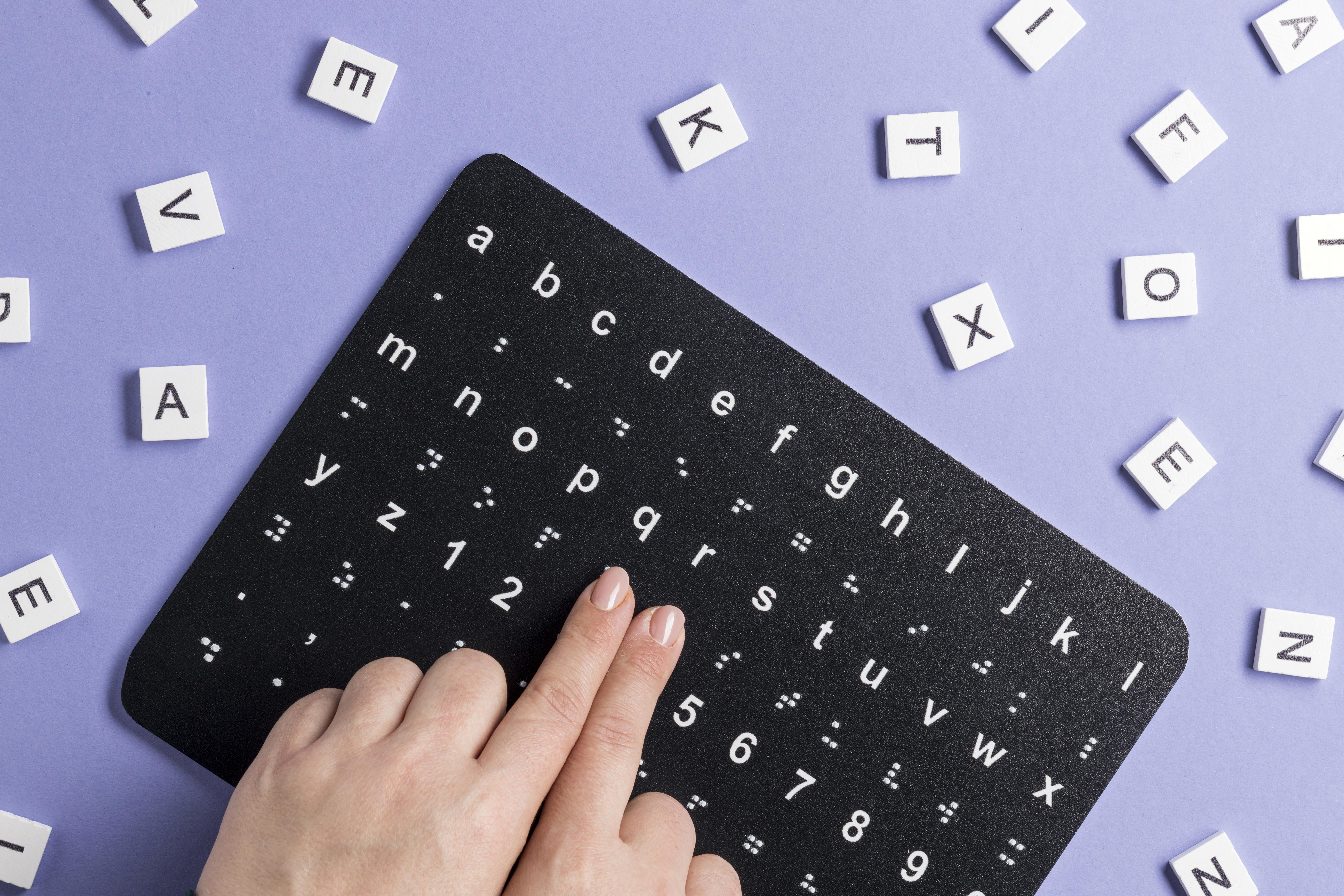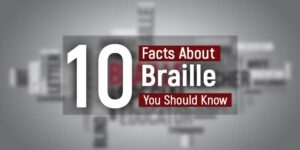Accessibility to websites in the digital age is an absolute necessity. You must consider building a website that is designed to meet the needs of those who are visually impaired. It is vital to provide the same opportunity and access for everyone.
Accessing and using the internet can be a challenge for the visually impaired.
In this blog, we will look at the importance of accessibility to websites for those who are blind, and how Braille transcriber can help you to make websites accessible to the community of blind people.
Why is accessibility to the Internet for individuals with disabilities crucial?
There are a variety of reasons your business must design an online environment that is accessible to the visually impaired. If you place accessibility first when designing your website, it allows visually impaired users to understand the web, interact with it, as well as contribute more to the internet.
Web accessibility plays an important part in ensuring the same accessibility for disabled people and visual impairments.
In making websites accessible you can make sure that people who are blind are able to browse independently, gain access to information, and take part in online.
By focusing on accessibility to the Internet Businesses and organizations can extend their reach and enhance the experience of their users.
What challenges do the visually impaired face surfing the web?
Blind people face many issues when they use the internet, mostly due to the design of websites that are not accessible. The most common issues are:
- Design and layout of the website– Websites that aren’t created with accessibility in mind or are inconsistent or complicated layouts and unorganized content could create confusion and limited accessibility to those who are visually impaired.
- The absence of alt text– Images play a crucial part in web design, but without alt text blind people are not able to understand visual content. Alt text provides information about images and provides context so screen readers can understand the description.
- Incompatibility between screen readers and assistive technology- Screen readers are crucial aids for people with blindness to browse the web. Inaccessible code practices, incorrect labelling, as well as a lack of keyboard navigation features, can create major obstacles.
- Complex navigation and a lack of clearly defined headings- Users who are visually impaired depend on clear and well-organized navigation to navigate through websites efficiently. Unorganized content, missing headings and inconsistency in labelling of links could create difficulties for users to comprehend the structure of the site and locate information effectively.
What are the devices that users with disabilities can employ to search on the internet?
Despite the difficulties they face, blind people employ various devices and techniques to browse and access the web. A few of these tools are:
- Screen reader- It is a software program that can read aloud information displayed on the computer screen. They interpret text and navigate through websites, and relay information in a clear and audible manner to users who are blind.
- Braille display and Braille equipment: Braille displays provide tactile output through the transformation of the content on screen to Braille characters. People who are blind can read Braille output with their fingers which allows them to browse and interact with websites efficiently.
- Magnification and high-contrast setting: People with poor vision frequently depend on the magnifying capabilities of screens or on high-contrast options that improve readability. These tools can magnify images and text and make them easier to read and navigate.
- Speech recognition and voice commands software: This technology lets blind users communicate with websites via spoken commands. The software for Speech Recognition converts words spoken to text, which allows blind users to navigate web pages and dictate text input.
How to make a website accessible to the blind community?
In order to ensure the accessibility of websites to the community of blind people owners should think about implementing these guidelines:
- Implementing accessibility-friendly design principles: Create websites that are accessible from the beginning. Utilize clear and semantic HTML.
- Alternative text for images: Add an alt description for the images to explain their significance to users who are blind. The alt text must be short precise, accurate, and give enough information.
- Utilizing clear and concise headings: Construct content using clear headers as well as subheadings. This makes it easier for blind users to navigate through the site quickly and quickly find the information they need.
- Tests and feedback: Regularly test websites with accessibility evaluation tools and conduct tests with the help of the visually impaired. Get feedback from users and make the necessary changes to increase accessibility on websites.
Conclusion
Accessibility to websites for people who are blind is not solely a social responsibility, but it is also an obligation under the law.
In making websites accessible, we can ensure that people with disabilities have access to information, take part in online activities, and enjoy equal access to participation in the online world. Through understanding the challenges for those who are visually impaired as well as the technology they employ and the steps needed to create websites that are more accessible to them.







